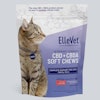
For pet food and human food producers alike, sustainability is no longer a “nice to have” program or product feature. Increasingly, consumers demand the companies and brands they buy from to incorporate sustainability, in every sense of the concept, into all they do. On average, 87% of consumers from countries around the world expected companies to invest in sustainability in 2019, up from 68% just the prior year, according to surveys conducted by Innova Market Research.
And companies know it. “Manufacturers are seeking to meet the sustainability demands of the consumer, or risk social scorn, to create more environmentally friendly, healthy and nutritious products for animals and not only focus on their bottom lines,” said Lawrence Blitz, president of Green Source Organics, in an article in the February issue of Petfood Industry written by my colleague, Tim Wall.
And, on the human food side: “With a wealth of data on the sustainability of the food industry available for anyone to access, consumer preferences are naturally changing,” said Richard van Lijssel, director of technology for Rousselot, in an article by Gaynor Selby on FoodIngredientsFirst.com. “Sustainability policies and commitments are not a ‘nice to have’ option anymore but are expected by people globally. Brands must ensure their practices and products meet these requirements to stay ahead of the curve.”
It's not a coincidence that Rousselot’s parent company, Darling Ingredients, also has divisions that supply ingredients to the pet food industry; it’s another sign of how closely the human and pet food industries are linked and how sustainability has become a common thread running through both.
Human food co-products as pet food ingredients
One of the most interesting things to me is how many areas and concepts the word “sustainability” has come to represent to consumers and corporations alike. It includes everything from the raw materials – how ingredients are sourced, harvested, processed and transported, as well as how animals providing protein ingredients are raised and treated – to social and ethical issues (such as treatment of human labor) to all aspects of packaging, including using less material and making sure what is used is recycled, recyclable or both.
Yet given that this is food we’re talking about (for humans and pets), ingredients especially play a key role in consumers’ minds and in how companies innovate with ingredients to achieve sustainability goals and – also not coincidentally – save money.
For pet food, co-products from the human food chain are a ripe source for innovation in terms of novel ingredients. Take another recent article by Wall, about a new technology developed by scientists in Scotland to grow algae on a leftover product from the Scotch whisky distillation process (called, in a fun coincidence, pot ale). The algae can replace fish as a source of omega-3 fatty acids for pets, according to the scientists, who have in fact sold the algae to an as yet undisclosed premium pet food manufacturer.
“We estimate 1 ton of our algae saves around 30 tons of wild fish,” an endangered source, said Ruairidh Henderson, general manager of MiAlgae, the company. He also told Wall that MiAlgae’s process could theoretically be used with any type of distilled liquor.
Of course, this isn’t the first pet food ingredient to come from a co-product of an alcohol-based beverage for humans. Brewer’s yeast from beer making has been provided as a pet food ingredient by suppliers like F.L. Emmert Co. for many years, offering minerals, vitamins and gut health benefits while not competing with the human food chain, according to Elizabeth Barber, vice president of corporate development for the company. “Since 1881, Emmert has helped breweries operate sustainably by re-purposing previously unusable products and using them to improve animal health,” she told Wall.
Pet food companies face challenges due to humanization
Ingredient suppliers for human food also get in on the “upcycling” act. For example, CP Kelco, which supplies citrus-based ingredients, has a patented method of processing citrus peel in the production of pectin, Selby wrote. “The citrus peel that begins as a waste product of the juicing industry is not only upcycled into our products, but the water byproduct from our peel process is recycled to nurture eucalyptus and citrus crops, and the leftover citrus peel from pectin production is turned into animal feed for local farm animals” in Brazil, said Brian Williams, vice president, environment, safety & sustainability.
Yet companies operating in the human food industry likely don’t face some of the challenges that pet food manufacturers and suppliers do in educating pet owners about why such upcycled or recycled ingredients are good – not only for the environment but also for their pets.
“People increasingly demand pet foods made from the same ingredients as human food, while co-products have become anathema among some consumers, as humanization influences pet dietary choices,” Wall wrote. He then quoted Barber again: “They like the idea of recycling and sustainability, but they don’t want to feel like they’re feeding their pets recycled ingredients they wouldn’t eat themselves. That presents a unique challenge to pet food manufacturers that do their best to minimize food waste by using leftovers from human food production.
“Without this sustainability cycle between food manufacturers and pet food companies, animal health would decrease and environmental costs would increase,” Barber continued. “The pet food industry in general practices a high degree of ecological awareness.”
Purchases of sustainable products increasing
So, how to get that message to consumers, especially in an environment of online pet food ratings sites that warn pet owners against selecting foods with anything but whole, fresh meats or similar ingredients? While it may seem like an uphill, perhaps even futile battle, I believe there’s hope.
Millennials, now the largest pet-owning group in the U.S., are especially interested in sustainability. In a global consumer confidence survey that Nielsen conducted with the Conference Board, 83% of millennials said it was extremely or very important to them that companies implement programs to improve the environment, and 75% said they definitely or probably will change their purchase or consumption habits to reduce their impact on the environment. That data was presented by Maria Lange, vice president of strategic verticals pet and cannabis for Nielsen, at the 13th Annual Pet Food Conference organized by the American Feed Industry Association.
Further, 38% of all survey respondents said they would be willing to pay a premium (higher than average price) for products that contain environmentally friendly or sustainable materials, and 30% said they’d pay a premium for products that deliver on social responsibility claims like free range, pasture raised, humane.
Of course, stated willingness to pay is not the same as actually paying it and buying such products, but other data presented by Lange seem to indicate that consumers are starting to follow up demands with purchases, putting their money where their mouth is. Purchases of sustainable products (all categories, not just pet food or human food) have increased steadily, reaching US$128.5 billion in 2018, according to Nielsen data. Nielsen projects that figure to hit US$142.4 billion (conservative estimate) to US$150 billion (optimistic forecast) by 2021, and represent 25% of total store sales, up from 22.3% in 2017.
As consumers increasingly demand and show willingness to pay for sustainability, pet food companies and suppliers have a powerful story to tell in how they can meet the demand.


















